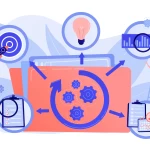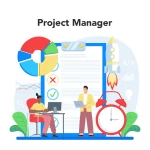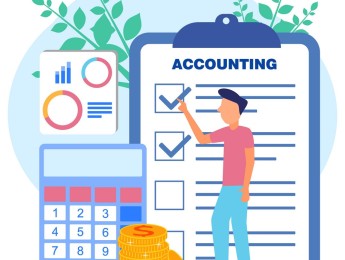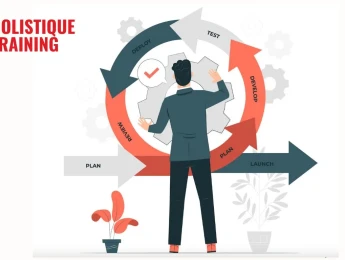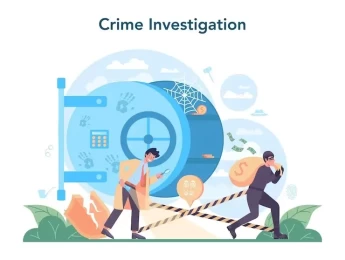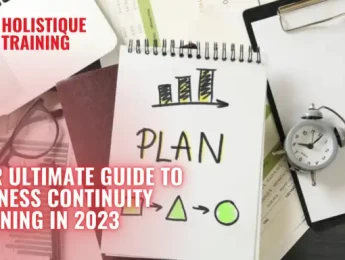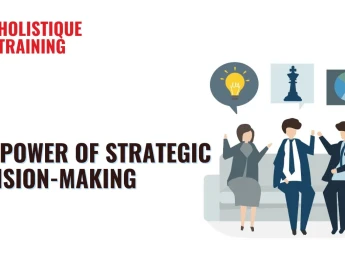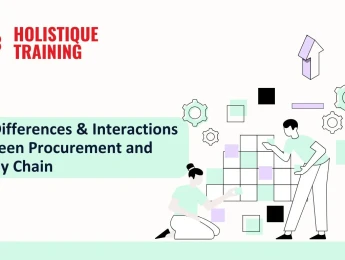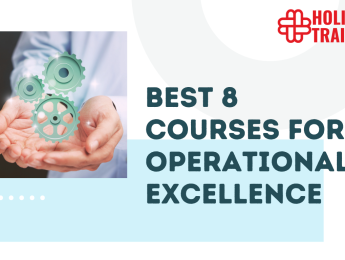- Table of Contents
- Introduction
- What Is a Project Strategy?
- What Are the Stages of Project Management Strategy?
- 1. Initiation
- 2. Planning
- 3. Execution
- 4. Monitoring and Controlling
- 5. Closure
- Why Is It Important to Have a Project Management Strategy?
- Clear Direction and Focus
- Effective Resource Utilisation
- Risk Mitigation and Problem Anticipation
- Stakeholder Communication and Confidence
- Efficient Time Management
- Improved Decision-Making
- Continuous Improvement and Learning
- 11 Effective Project Management Strategies
- 1. Agile Methodology
- 2. Waterfall Approach
- 3. Scrum Framework
- 4. Critical Path Method (CPM)
- 5. PRINCE2 (Projects IN Controlled Environments)
- 6. Kanban System
- 7. Lean Project Management
- 8. Six Sigma
- 9. RAD (Rapid Application Development)
- 10. PRISM (Projects Integrating Sustainable Methods)
- 11. Feature-Driven Development (FDD)
- Utilising Software to Help With Your Strategy
- Centralised Information Management
- Task Management and Allocation
- Real-Time Collaboration
- Progress Tracking and Reporting
- Resource Management
- Risk and Issue Management
- Integration Capabilities
- Customisation and Scalability
- Mobile Accessibility
- Data Security and Backup
- How to Know the Best Strategy to Use for Your Project
- 1. Understand Your Project
- 2. Assess Your Team
- 3. Consider Project Complexity
- 4. Evaluate Project Requirements
- 5. Analyse Time Constraints
- 6. Seek Expert Advice
- 7. Pilot and Iterate
- Continuous Evaluation and Adaptation
- Document Your Decision
- Conclusion
Introduction
Picture this: You're handed a jigsaw puzzle with thousands of intricate pieces, and you're told to complete it within a set timeframe. This task is akin to project management, where numerous elements need to align seamlessly to achieve a specific goal. In the realm of project management, having a well-thought-out strategy is your secret weapon. It's the compass that guides you through the maze of tasks, deadlines, and resources, ensuring your project not only gets completed but excels. Let's delve deep into the world of project management strategies, understanding what they are, why they are indispensable, and how to master their effective application.
What Is a Project Strategy?
At its core, a project strategy is a carefully crafted plan that outlines the objectives, scope, timelines, resources, and risks associated with a project. It's more than just a roadmap; it's a dynamic blueprint that evolves as the project progresses. A robust strategy aligns team members, resources, and tasks cohesively, ensuring everyone is on the same page, driving towards a common goal.
What Are the Stages of Project Management Strategy?
Project management strategies are not one-size-fits-all solutions; they adapt to the unique needs of each project. However, they generally follow a structured framework:
1. Initiation
In the initiation phase, the project is conceived. This is where the project’s purpose and feasibility are explored. Key activities in this stage include:
Project Idea Generation
Ideas are brainstormed, and potential projects are identified. These ideas could originate from market demands, organisational needs, or innovative concepts.
Feasibility Study
A detailed analysis is conducted to assess the project's feasibility. This includes financial feasibility, technical feasibility, legal considerations, and market demand. The goal is to determine whether the project is viable and worth pursuing.
Project Charter
A project charter is created, outlining the project's objectives, scope, stakeholders, constraints, and initial risks. It serves as a formal document that authorises the project and provides a clear understanding of its purpose.
2. Planning
The planning stage is crucial as it lays the foundation for the entire project. Activities in this phase include:
Scope Definition
The project scope is clearly defined, outlining what is included and what is not. This helps in preventing scope creep, ensuring the project stays focused on its original objectives.
Task Breakdown
The project is divided into smaller, manageable tasks. Each task is analysed, and dependencies between tasks are identified. This breakdown forms the basis for creating a detailed project schedule.
Resource Allocation
Resources, including human resources, equipment, and materials, are allocated based on the task requirements. Efficient resource allocation is essential for timely and cost-effective project execution.
Risk Management
Risks are identified, assessed, and mitigated. A risk management plan is developed to address potential challenges, ensuring the project team is prepared to handle unforeseen circumstances.
Budgeting
A detailed budget is prepared, estimating the costs associated with each task and resource. Effective budgeting ensures financial resources are allocated judiciously throughout the project lifecycle.
3. Execution
The execution phase is where the project plan is put into action. Activities in this phase include:
Task Implementation
Project tasks are executed as per the plan. Resources are mobilised, and tasks are completed within the defined timelines.
Team Collaboration
Effective communication and collaboration among team members are essential. Regular team meetings, progress updates, and issue resolution mechanisms are established to maintain a cohesive team effort.
Quality Assurance
Quality standards and metrics are defined and monitored. Continuous quality checks ensure that the project deliverables meet the specified requirements and expectations.

4. Monitoring and Controlling
The monitoring and controlling phase involves tracking the project's progress and making necessary adjustments to keep it on track. Activities include:
Progress Tracking
Project progress is monitored against the planned schedule and milestones. Key performance indicators (KPIs) are used to measure progress and identify any deviations from the plan.
Issue Identification and Resolution
Issues and bottlenecks are identified promptly. Effective problem-solving mechanisms are in place to resolve issues and keep the project moving forward.
Change Management
Changes in project scope, schedule, or requirements are managed and controlled. A formal change management process ensures that changes are documented, assessed for impact, and approved before implementation.
5. Closure
The closure phase marks the completion of the project. Activities in this phase include:
Project Evaluation
The project outcomes are evaluated against the initial objectives. Successes and achievements are acknowledged, and areas for improvement are identified.
Lessons Learned
A comprehensive lessons learned document is created, capturing insights, challenges, and best practices observed during the project. These lessons serve as valuable knowledge for future projects.
Formal Closure
Formal closure activities include obtaining client acceptance, releasing project resources, closing contracts, and archiving project documents. A formal closure ensures that all project-related activities are completed satisfactorily.
By understanding and meticulously executing each stage of the project management strategy, project managers can navigate the complexities of their projects with precision and confidence. These stages provide a roadmap, ensuring that the project stays on course, meets its objectives, and delivers value to stakeholders.
Why Is It Important to Have a Project Management Strategy?
The importance of having a well-defined project management strategy cannot be overstated, and many project managers realise that. In fact, as per the PWC report, an overwhelming 97% of respondents acknowledged the pivotal role of project management strategies in shaping business performance and organisational triumph. Additionally, a staggering 94% agreed that the right project management strategies serve as catalysts for substantial business growth. Let’s now delve deeper into why having a project management strategy is indispensable:
Clear Direction and Focus
A project management strategy provides a clear sense of direction. It outlines the project’s goals, objectives, and the steps to achieve them. This clarity ensures that every team member understands their role, the project's purpose, and how their efforts contribute to the overall mission. With a defined path, teams can focus their energy and resources efficiently, avoiding distractions and maintaining momentum.
Effective Resource Utilisation
Resources, whether human, financial, or material, are finite. A project management strategy allocates these resources judiciously. It helps in identifying the right people for specific tasks, ensuring that skills are matched with requirements. Financial resources are budgeted and utilised efficiently, preventing overspending. Proper resource management ensures that the project progresses smoothly without unnecessary delays or wastage.
Risk Mitigation and Problem Anticipation
Projects are not immune to challenges and uncertainties. A robust project management strategy anticipates potential risks. Risk analysis is conducted, and contingency plans are formulated. By identifying possible roadblocks beforehand, the team can proactively address them, minimising their impact. This proactive approach prevents small issues from snowballing into major problems, ensuring the project stays on course.
Stakeholder Communication and Confidence
Effective communication is at the heart of successful projects. A project management strategy includes a communication plan that keeps stakeholders informed about the project's progress, challenges, and achievements. Regular updates foster trust and confidence among stakeholders, be they clients, investors, or team members. Transparency in communication builds credibility, leading to stronger partnerships and support.
Efficient Time Management
Time is a precious commodity in any project. A project management strategy includes a detailed timeline with specific milestones and deadlines. This structured approach enables teams to prioritise tasks, allocate time effectively, and meet deadlines. Timely completion of tasks ensures that the project progresses at the desired pace, preventing unnecessary delays and ensuring timely delivery.
Improved Decision-Making
A project management strategy provides a framework for decision-making. When challenges arise, the strategy serves as a reference point, guiding project managers in making informed decisions. It helps in evaluating options, understanding their impact on the project, and choosing the best course of action. Informed decision-making prevents impulsive choices that could adversely affect the project's outcome.
Continuous Improvement and Learning
A well-executed project management strategy incorporates mechanisms for evaluation and learning. After project completion, a thorough analysis is conducted, identifying what worked well and areas that need improvement. These insights are documented as lessons learned, providing valuable knowledge for future projects. This cycle of continuous improvement ensures that each project becomes an opportunity to refine strategies and enhance efficiency.
In essence, a project management strategy is the compass that navigates the project through the complexities of tasks, resources, and uncertainties. It transforms a vision into a tangible, successful outcome by providing structure, clarity, and the tools necessary to overcome challenges. In the dynamic landscape of project execution, a well-devised strategy is not just an advantage; it’s a fundamental necessity that propels projects towards excellence and accomplishment.
11 Effective Project Management Strategies
Now that we understand the importance of project management strategies, let's explore 11 highly effective strategies that can elevate your project management game:
1. Agile Methodology
Agile is rooted in collaboration, adaptability, and customer feedback. It emphasises iterative development, breaking the project into small increments. Agile teams work closely with stakeholders, allowing for continuous feedback, which is integrated into subsequent iterations. Agile promotes a mindset of embracing change and responding to customer needs swiftly. Its flexibility makes it ideal for software development projects, where requirements often evolve during the development process.
2. Waterfall Approach
The Waterfall model offers a structured and systematic approach. It’s well-suited for projects with clearly defined requirements and minimal changes expected during development. Each phase must be completed before moving to the next, ensuring a disciplined progression. Waterfall provides clear documentation and is often used in industries with stringent regulatory requirements, such as healthcare and aerospace.
3. Scrum Framework
Scrum operates within the Agile framework, emphasising collaboration, transparency, and adaptability. It uses time-boxed iterations (sprints) to break down tasks. Daily stand-up meetings keep the team informed, and regular sprint reviews provide valuable feedback. Scrum is widely used in software development, allowing teams to deliver functional product increments quickly and adjust course based on user feedback.
4. Critical Path Method (CPM)
CPM focuses on identifying the most critical tasks that influence the project's timeline. By understanding the critical path, project managers can allocate resources efficiently and prioritise tasks crucial to project completion. CPM is essential for industries where time constraints are paramount, such as construction and event planning.
5. PRINCE2 (Projects IN Controlled Environments)
PRINCE2 offers a comprehensive approach to project management. It emphasises clear roles, well-defined stages, and effective communication. PRINCE2 is adaptable, making it suitable for various project types and industries. Its focus on detailed documentation ensures that project progress is well-tracked and deviations from the plan are identified promptly.
6. Kanban System
Kanban visualises work as tasks on a board. It provides a real-time view of the project’s progress, helping teams identify bottlenecks and optimise workflows. Work items are pulled through the stages, ensuring that team members do not overload themselves. Kanban is widely used in support and maintenance projects, enabling teams to handle diverse tasks efficiently.
7. Lean Project Management
Lean principles, derived from manufacturing, focus on efficiency and waste reduction. Lean project management emphasises continuous improvement, ensuring that processes are streamlined and non-value-added activities are eliminated. Lean is valuable in projects where efficiency and resource optimisation are critical, such as manufacturing and supply chain management.
8. Six Sigma
Six Sigma emphasises data-driven decision-making and process improvement. It aims to reduce defects and variations, ensuring consistent and high-quality outcomes. Six Sigma tools, such as DMAIC (Define, Measure, Analyze, Improve, Control), are used to identify problem areas and implement solutions. Six Sigma is employed in projects where quality control and process improvement are paramount, like manufacturing and healthcare.
9. RAD (Rapid Application Development)
RAD accelerates development by focusing on prototyping and quick feedback. It’s particularly useful for software development projects where rapid iterations and user input are vital. RAD allows teams to create prototypes swiftly, enabling clients to visualise the end product early in the development process. It’s beneficial for projects where time-to-market is crucial.
10. PRISM (Projects Integrating Sustainable Methods)
PRISM integrates sustainability into project management practices. It ensures that projects adhere to environmental and social responsibility standards. PRISM promotes the use of eco-friendly materials, energy-efficient technologies, and social inclusivity. It’s valuable in projects related to green construction, renewable energy, and community development, aligning projects with sustainable practices.
11. Feature-Driven Development (FDD)
FDD focuses on building specific features, one at a time. Each feature is thoroughly designed, developed, and tested before moving on to the next. FDD ensures that features are well-documented and easily understandable. It’s beneficial in software development projects where features can be developed independently, allowing for parallel work streams and faster delivery of functionalities.
Each of these strategies has its unique strengths, making it suitable for specific project scenarios. The choice of strategy depends on the project's requirements, complexity, and the team's expertise. Project managers often combine elements from multiple strategies to create a tailored approach that suits the project's unique needs, ensuring optimal project outcomes.
Utilising Software to Help With Your Strategy
Utilising project management software is a game-changer in modern project management practices. These digital tools streamline processes, enhance collaboration, and provide real-time insights, ensuring that project managers can effectively implement their strategies. Not only that but they also help teams actually get their projects done. Apparently, not all teams do that. In fact, a study by Gallup, spanning 10,640 project management teams across 200 companies and 30 countries, revealed a stark reality: merely 2.5% of these teams achieved 100% project completion. Leveraging software can help with streamlining the project’s process, thus making it easier to complete. Let’s explore other key aspects of utilising software to assist in project management strategies:
Centralised Information Management
Project management software acts as a centralised hub for all project-related information. Documents, schedules, tasks, communication threads, and progress reports are stored in one place. This centralised repository ensures that team members have easy access to the most up-to-date information, reducing confusion and ensuring everyone is on the same page.
Task Management and Allocation
Project management software allows project managers to break down the project into tasks, assign them to team members, and set deadlines. With visual task boards and customisable workflows, tasks can be tracked from creation to completion. Team members receive notifications about their assignments, ensuring accountability and timely task execution.
Real-Time Collaboration
Modern project management tools facilitate seamless collaboration among team members, regardless of their physical location. Features such as chat, comments, and collaborative document editing promote real-time communication. Team members can discuss tasks, share ideas, and provide feedback instantly, fostering a collaborative and agile work environment.
Progress Tracking and Reporting
Project management software provides intuitive dashboards and reporting tools. Project managers can track the project’s progress, monitor key performance indicators (KPIs), and generate reports with a few clicks. Visual representations, such as Gantt charts and pie graphs, offer insights into task completion, resource utilisation, and project milestones. These tools enable informed decision-making and help identify bottlenecks promptly.
Table 1: Some project management software & their features
Software | Task Management | Real-time Collaboration |
Asana | Assign, Track, Set Deadlines | Team Messaging, File Sharing |
Trello | Visual Boards, Drag-and-Drop Tasks | Card Comments, File Attachments |
Microsoft Project | Gantt Charts, Resource Allocation | Team Chat, Online Meetings |
Jira | Custom Workflows, Issue Tracking | Agile Reporting, Advanced Analytics |
Basecamp | To-Do Lists, Document Sharing | Message Boards, Automatic Check-ins |
Resource Management
Effective resource allocation is vital for project success. Project management software helps in resource management by providing visibility into team members’ workloads, skills, and availability. Project managers can assign tasks based on team members’ expertise, ensuring that the right skills are utilised for specific project requirements. Overallocation and burnout risks can be mitigated through careful resource planning.
Risk and Issue Management
Project management software includes features for risk identification, assessment, and mitigation. Risks and issues can be documented, categorised, and prioritised within the software. Automatic notifications alert the project manager when a risk threshold is breached, enabling timely action. These tools facilitate proactive risk management, ensuring that potential problems are addressed before they escalate.
Integration Capabilities
Project management software often integrates with other tools and applications, creating a seamless workflow. Integration with email, calendar apps, version control systems, and communication platforms enhances efficiency. For example, integration with version control systems ensures that the latest versions of documents are always accessible within the project management software, reducing confusion and versioning issues.
Customisation and Scalability
Project management tools offer customisation options to tailor the software according to the project’s specific requirements. Custom fields, workflow configurations, and user permissions can be adjusted to match the project’s unique needs. Moreover, these tools are scalable, accommodating the growth of the project and the team. Whether it’s a small startup project or a large enterprise-level initiative, the software can adapt to the project’s scale.
Mobile Accessibility
Most project management software comes with mobile applications, allowing team members to stay connected and updated on the go. Mobile accessibility ensures that team members can view tasks, update progress, and communicate with colleagues, irrespective of their location. This flexibility enhances productivity and responsiveness, especially for remote or field-based teams.
Data Security and Backup
Project management software prioritises data security. It offers robust security features such as encryption, user authentication, and role-based access control. Regular data backups and disaster recovery options ensure that project data is protected against loss or accidental deletion. This reliability gives project managers confidence in the safety of their project-related information.
In short, project management software is not just a tool; it’s a strategic asset that amplifies the effectiveness of project management strategies. By harnessing the power of these digital solutions, project managers can optimise their strategies, foster collaboration, mitigate risks, and deliver successful projects within scope, time, and budget constraints. Embracing these technological advancements empowers project managers and their teams to excel in an increasingly complex and competitive landscape.
How to Know the Best Strategy to Use for Your Project
Selecting the best project management strategy for a specific project is a critical decision that can significantly impact the project's success. To make an informed choice, project managers should consider several factors that align with the project's unique characteristics and objectives. Here are key considerations and steps to help you determine the most suitable strategy for your project:
1. Understand Your Project
Start by gaining a deep understanding of the project's nature and goals. Ask questions like:
- What is the project's primary objective?
- What are the specific requirements and constraints?
- Is it a simple, well-defined project, or a complex, evolving one?
A clear grasp of the project's fundamentals is the foundation for choosing the right strategy.
2. Assess Your Team
Your team's skills, experience, and familiarity with various project management methodologies are essential considerations. Analyse factors such as:
- The team's expertise in specific methodologies.
- Their ability to adapt to new approaches.
- The level of training or support required for a particular strategy.
Choose a strategy that aligns with your team's strengths and preferences to maximise efficiency.
3. Consider Project Complexity
Project complexity varies from simple to highly intricate. Different methodologies are better suited for specific complexity levels. For instance:
- For complex, evolving projects with unclear requirements, Agile methodologies are often more appropriate.
- For simple, well-defined projects, traditional Waterfall or the Critical Path Method (CPM) may be more suitable.
Matching project complexity to the methodology ensures that your approach is a good fit.
4. Evaluate Project Requirements
Project requirements can change over time. Consider whether your project requires flexibility, iterative development, or the ability to adapt to evolving client demands. For example:
- If requirements are likely to change, consider Agile or Scrum for their adaptability.
- If requirements are well-defined and stable, traditional methodologies like Waterfall may be sufficient.
Choosing a strategy that aligns with the project's requirements ensures a smoother journey.
5. Analyse Time Constraints
Project time constraints are crucial. If your project has strict time limitations, such as a fixed deadline, you'll want a strategy that ensures swift development and delivery. Strategies like Rapid Application Development (RAD) or Lean can expedite project timelines effectively.
6. Seek Expert Advice
Sometimes, it's valuable to seek advice from experts or consultants in project management. They can offer insights based on their experience and knowledge of industry best practices. These experts can help you identify the best strategy for your specific project.
7. Pilot and Iterate
In certain cases, running a small-scale pilot project using different strategies can provide valuable insights. Pilot projects allow you to test strategies and determine which one works best in your organisation's context. Based on the pilot's results, you can make informed decisions for larger projects.
Continuous Evaluation and Adaptation
Project management is not static. As the project progresses, circumstances may change. Continuously evaluate whether the chosen strategy is effective. If you encounter roadblocks or realise that the initial strategy isn't optimal, be willing to adapt and transition to a more suitable approach.
Document Your Decision
Once you've selected a project management strategy, document your choice and the rationale behind it. This documentation will serve as a reference for your team and stakeholders, ensuring that everyone is aligned with the chosen approach.
In summary, selecting the best project management strategy involves a thoughtful analysis of project characteristics, team capabilities, and specific requirements. There's no one-size-fits-all solution, as each project is unique. The goal is to choose a strategy that aligns with the project's objectives, complexity, and constraints, while also considering your team's expertise. Regular evaluation and adaptation throughout the project lifecycle will help ensure the strategy remains effective, leading to successful project execution and delivery.
Conclusion
mastering effective project management strategies is the cornerstone of successful project execution. By understanding the nuances of various methodologies, considering project complexities, evaluating team expertise, and leveraging the power of project management software, you equip yourself with the tools to navigate the intricacies of any project. Remember, project management is not just a skill; it's a mindset, a strategic approach that transforms challenges into opportunities and ideas into tangible results.
Embarking on this transformative journey is made even more accessible with our course, ‘Project Management for Non-Managerial Positions.’ Designed for individuals keen on honing their project management skills, this course offers comprehensive insights, real-world case studies, and hands-on experiences. Discover the art of efficient project execution, enhance your leadership capabilities, and become the driving force behind successful projects, regardless of your managerial title. Don't just manage projects; excel in them. Enrol now and unlock your potential as a project management expert!




